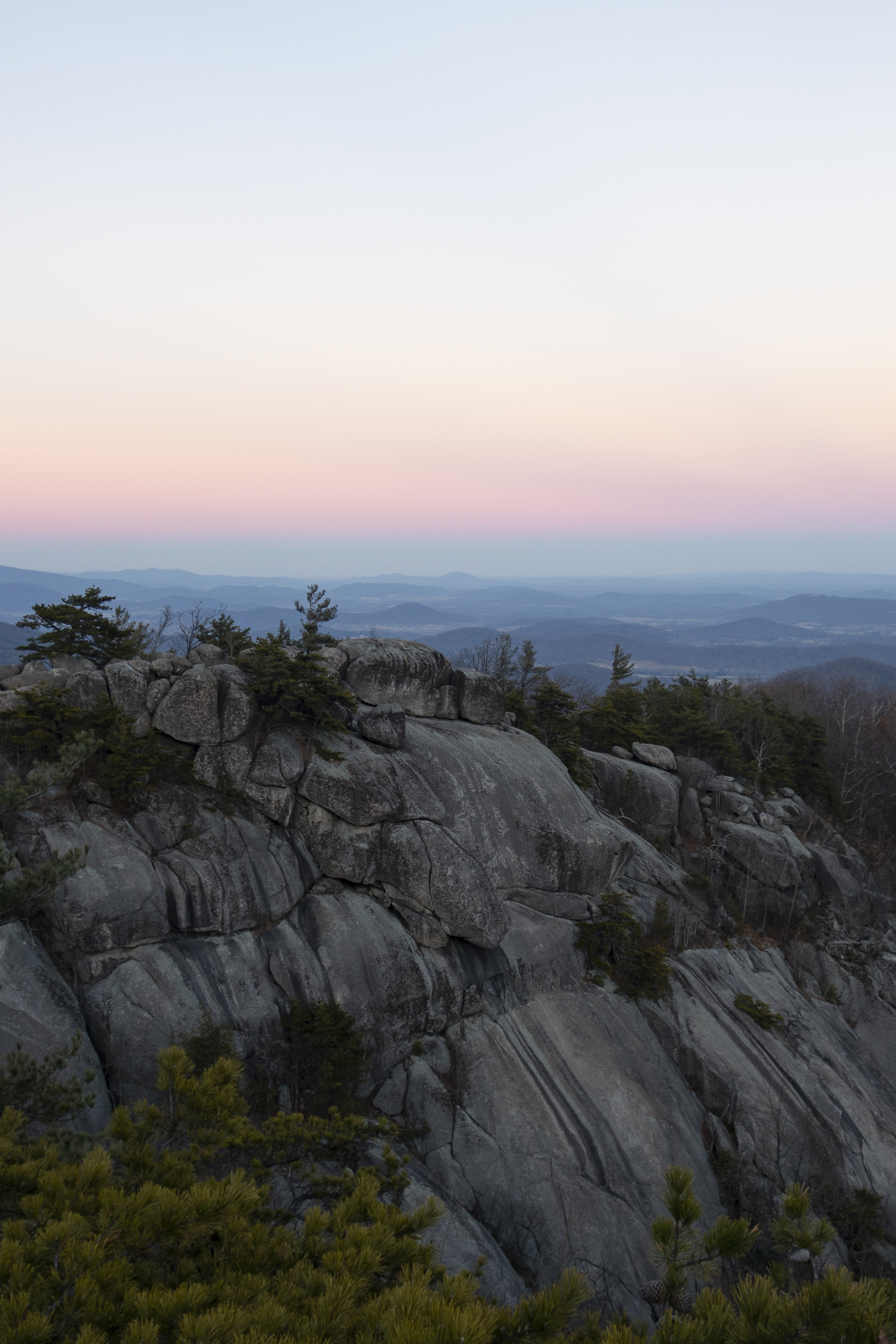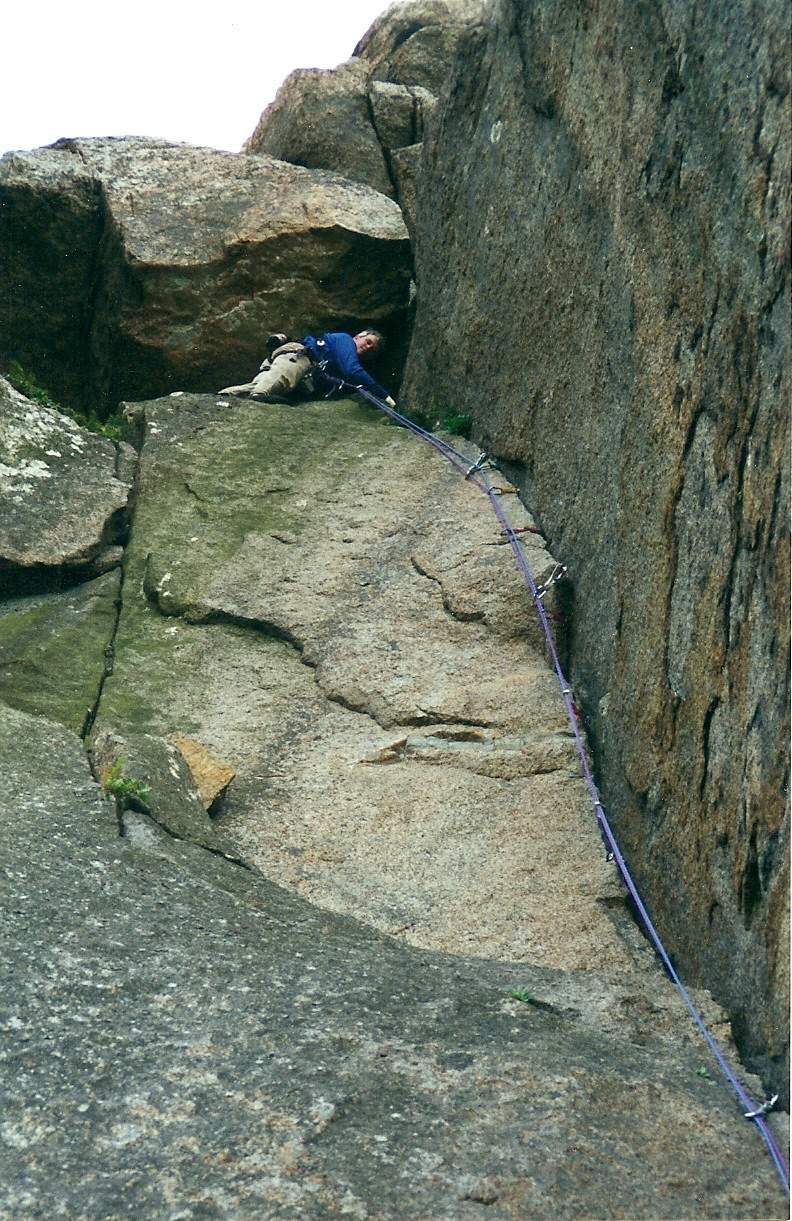Virginia's Boldest: the Geology of Old Rag | Excerpts from Old Rag a Climber's Guide
Posted by Joel Maynard on 29th Dec 2023
The granite bedrock that hosts the beautiful splitters and spicy slabs on Old Rag is part of a group of ancient igneous and metamorphic rock bodies that form the core of the Blue Ridge Mountains. The light-colored Old Rag Granite is composed mainly of white- to light-gray alkali feldspar and blue quartz crystals and is nearly devoid of dark minerals. The minerals form an interlocking mosaic pattern of coarse crystals (up to an inch in length in places), characteristic of magmas that have cooled slowly at very high temperature and pressure conditions deep within the earth's crust. Radiometric age determinations date the time of magma crystallization between 1.063 and 1.115 billion years ago. The magma likely formed due to the melting of existing crustal rocks during a time of intense mountain building and regional metamorphism associated with the formation of a Proterozoic Era supercontinent known as Rodinia. The melted rock migrated upward in the crust to a zone where it cooled slowly, allowing time for coarse crystal growth.

Over a period of several hundred million years, the cooled pluton was slowly brought to the surface through regional uplift and unrelenting erosion, where it was exposed to weathering on a bleak and barren land surface devoid of life. Periodic extensional stresses due to the eventual breakup of the Rodinian supercontinent opened deep fractures in the granitoid rocks of the Blue Ridge, which allowed tremendous volumes of basaltic lava to cut through them and erupt onto the pre-historic land surface. Thick accumulations of these ancient lava and ash flows are present throughout much of Virginia's Blue Ridge, and Old Rag Mountain is cut by several northwestward-trending dibasic greenstone dikes that piped some of this material from Earth's mantle to the paleo-surface. These features can be recognized by the presence of dark-green to black, very fine-grained rock filling angular fractures in the light-colored granite, and the presence of greenstone blocks among the granite talus in gullies on the flanks of the mountain hints at the importance of these pre-historic weaknesses in how the mountain erodes over time.
Over the last 600 million years, the fractured and intruded pluton experienced subsidence and burial beneath several miles of terrestrial and marine sediments, followed by renewed episodes of mountain building that culminated In the formation, and eventual breakup, of another Paleozoic Era supercontinent known as Pangea. The compressional stresses accompanying these events complexly folded and faulted all of the rocks in the area, forcing large sections of the North American crust to folded buckle and ramp up and over one another toward the interior of the craton. The Old Rag Granite escaped much of the metamorphic overprint experienced by other rocks of the region, but in some areas (like the base of Whale's Lip and in the Pleasure Dome area) preferential alignment of the crystal grains and accessory garnet mineralization hint at the high pressures and temperatures it experienced due to the Alleghanian Orogeny 3.

Erosion since the breakup of Pangea approximately 200 million years ago has carried away most of the Himalayan-scale mountains that existed in the region at one time, but continued crustal rebound eventually resulted in the second exposure of the Old Rag Granite for our climbing enjoyment. The conspicuous lack of mica, a platy mineral common to many granite rocks, and pervasive microfracturing of mineral grains imprinted during the rock's long, tectonically abusive ride on the earth's crust present abrasive surfaces that help lock in jams and make improbable slab moves feel possible. Feldspar crystals are more susceptible to chemical weathering than quartz, causing the gritty quartz crystals to stand proud until they are broken along microfractures or released from the rock mass completely. Over time, this process, along with the tendency for granite plutons to fracture along broad curving exfoliation surfaces, results in granite crags like Old Rag to round- or dome-out near the top of many routes. This same quality can cause some of the weathered crystals on the less traveled routes to break away or cause some of the stouter slab routes to become harder over time, especially if a key macro-crystal breaks away, but usually the broken surfaces expose new abrasive microfractured crystal faces that keep friction high and may prevent polishing. Considering the Old Rag's long abusive history, it is remarkable that the rock quality has remained so high for so long. Not only is the mountain home to some of Virginia's boldest and most compelling routes, it is also a place that humbles the human ego with the immensity of time and space.

